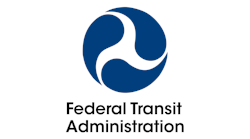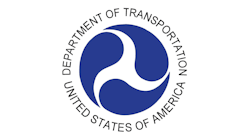FTA Releases WMATA Traction Power Electrification System Report
The U.S. Department of Transportation’s Federal Transit Administration (FTA) recently issued Special Directive 17-1 to the Washington Metropolitan Area Transit Authority (WMATA) requiring the transit agency to complete 47 actions to correct deficiencies in its traction power electrification (TPE) system, which is used to electrify Metrorail trains. The special directive is based on 22 findings from an FTA investigation reportinto the condition and safety performance of the Metrorail TPE system.
“The safe operation of Metrorail service is directly dependent on WMATA implementing corrective actions to reduce and eliminate electrical arcing events that have too often resulted in smoke and fire, which can endanger passenger safety,” said U.S. Transportation Secretary Anthony Foxx. “WMATA has already started to address these issues, and the FTA report and special directive will help WMATA prioritize what it must do to improve its traction power system to keep the trains running safely.”
The investigation report finds that while the traction power system continues to be a concern, FTA safety oversight leadership has driven WMATA to create a safer environment for both workers and passengers. In May 2016, FTA directed WMATA to complete repairs to its TPE system on segments of the Red Line where a large number of electrical arcing events resulted in smoke and fire. As a result of WMATA’s subsequent maintenance activity, the number and severity of these events has been reduced. WMATA experienced 18 electrical arcing events in these areas from March 1 to June 14 of this year, including four major events at the end of April and early May. Since June 15, there have been only eight relatively minor events.
“WMATA, like many legacy systems, is struggling to manage the safety consequences of aging traction power systems that have suffered from deferred maintenance,” said FTA Acting Administrator Carolyn Flowers. “Under FTA oversight, WMATA is addressing the issue, and must provide sufficient staffing and resources to ensure lasting safety improvements are made.”
Since the FTA assumed temporary safety oversight of the Metrorail system in October 2015, WMATA has reported more than 70 safety events resulting from electrical arcing in its traction power system. Each of these events required an emergency response, and many resulted in the partial or full shutdown of a station or off-loading of a passenger train.
Given the sharp increase in the number of TPE system-related failures and events over the last year, this FTA investigation focused on four categories of safety critical concerns: (1) TPE System Roles, Responsibilities, and Resources; (2) TPE Infrastructure, (3) Testing and Inspection Programs; and (4) Capital Projects.
The FTA investigation confirmed that the safety performance of WMATA’s traction power system has deteriorated with age, deferred maintenance, and increased exposure to water and other contaminating materials. The FTA report also finds that key components of the TPE system have been compromised and are no longer performing as originally specified, and that programs to replace and upgrade critical TPE-related infrastructure have not been sufficient for the age of the system or the demand placed on it.
In addition, the FTA report finds that in response to changing budgetary and staffing conditions, WMATA eliminated preventive maintenance programs to test key traction power components to predict failures, eliminated or cut back cleaning programs in tunnels, and limited its corrosion control testing program.
Over the last year, WMATA has already taken a number of critical steps to address deficiencies within its traction power system. For example, WMATA has nearly completed a program to ensure that its power cable connector assemblies are properly constructed and installed, enhanced its visual and thermal cable inspection program, eliminated third rail expansion joints in tunnels, and reinstated its tunnel and insulator cleaning programs. WMATA is also reviewing roles and responsibilities for inspecting, testing, and maintaining system elements, and created a new department with exclusive responsibility for high voltage TPE system maintenance.
Building on this progress, and as directed by Special Directive 17-1, WMATA must develop corrective action plans to address the findings of the report and related required actions. WMATA’s proposed corrective action plans are subject to FTA approval, and the FTA will monitor the agency’s progress to implement the safety improvements.
The traction power report, along with other FTA-issued investigation reports, demonstrates how the FTA is exercising the authority and enforcement tools provided by Congress to aid WMATA in addressing systemic safety deficiencies and building a strong safety culture. It is important to note that the FTA’s reports do not amount to a finding that the Metrorail system is “unsafe.” In each investigation and report, and with each step taken, the FTA assessed the risk associated with the flaws found in the Metrorail system and determined that those risks are not so great that they place passengers and workers at substantial risk of death or injury.




